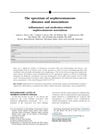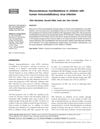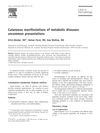National Institutes of Health Dermatology Funding Trends 2015–2019
January 2021
in “
The journal of investigative dermatology/Journal of investigative dermatology
”
TLDR NIH dermatology funding increased by 14.7% from 2015 to 2019, but men and certain states and institutions received most of the money.
From 2015 to 2019, the NIH awarded $554.2 million to 1,764 dermatology-related projects across 171 institutions, with a 14.7% funding increase over the period. Male recipients received 60.9% of the total funding, with an average annual difference of $24.3 million more than female recipients. PhD holders received the largest portion of funding (47.5%), followed by MDs (28.0%) and MD/PhDs (24.1%). The top five states and institutions received a significant portion of the funding, highlighting a concentration of resources. Despite increased funding for both genders, a notable gender gap persisted, emphasizing the need for continued support for female investigators. The study suggested that promoting funding distribution to less frequently awarded institutions could enhance diversity and support emerging researchers. The study analyzed NIH funding trends for dermatology from 2015 to 2019, revealing no downtrend in funding and a slight increase in female investigators (113 in 2019 vs. 111 in 2015). Unlike previous studies, it showed a leveling off in the fraction of MD recipients. The study highlighted the importance of diversifying grant awards across more institutions to enhance topic and expertise breadth. It also emphasized the need for mentorship programs and research fellowships to support underrepresented groups. The analysis included projects related to dermatologic topics and diseases with cutaneous manifestations, adjusting all funding to 2015 equivalent dollars. The study acknowledged limitations due to the lack of applicant demographic data and stated no conflicts of interest.






